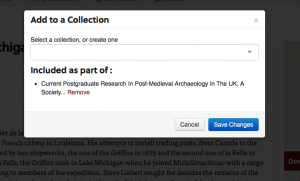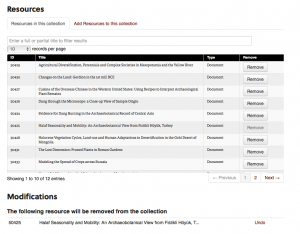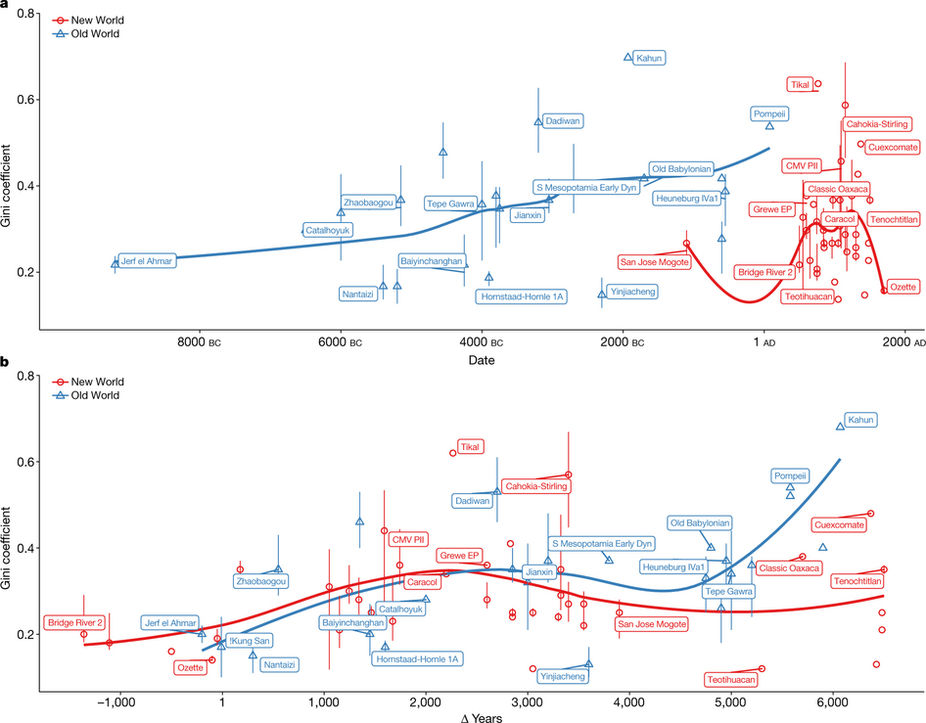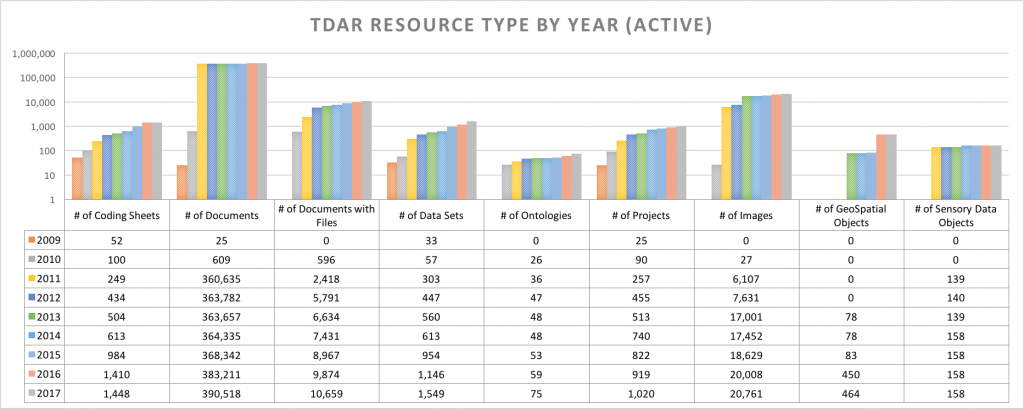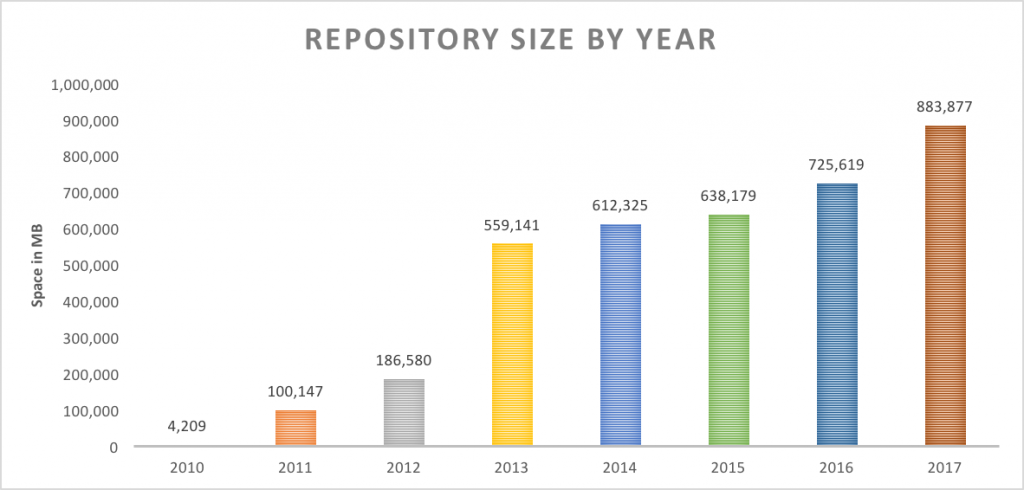The Center for Digital Antiquity staff and collaborators report a very successful year in the area of grant awards. Last spring, Keith Kintigh (School of Human Evolution and Social Change, Arizona State University), a member of the Center for Digital Antiquity Board of Directors, and a group of co-investigators were awarded a three-year grant, “The Digital Archive of Huhugam Archaeology,“ by the National Endowment for the Humanities, Division of Preservation and Access, Humanities Collections and Reference Resources Program. The Digital Archive of Huhugam Archaeology (DAHA) project will create a comprehensive digital library of reports on archaeological investigations of the ancient Huhugam (Hohokam). These central and southern Arizona inhabitants once tamed the Sonoran desert through sophisticated irrigation, far-flung networks of ceremonial ball courts, specialized craft production, extensive trade, and large, long-lived towns. When complete, the archive will contain copies of 1600 major archaeological reports, estimated to total roughly 400,000 pages. The DAHA archive content is already being built in tDAR.

Drawing of Compound A, including the Great House, at Casa Grande Ruins National Monument
The digital archive will reside within Digital Antiquity’s tDAR(the Digital Archaeological Record) online repository that preserves and provides access to archaeological and cultural heritage data and information. The archive will provide scholars with crucial long-term data for comparative studies, indigenous communities with access to a wealth of research on ancestral populations, teachers at all levels with firsthand research texts for classroom use, and the general public with a reliable, valued resource to learn about this fascinating ancient culture.
Kintigh is the lead PI for the grant for which Digital Antiquity Executive Director, Frank McManamon is one of the co-PIs. Digital Antiquity Director of Technology Adam Brin, Program Manager, Leigh Anne Ellison, and Lead Digital Curator, Rachel Fernandez also have substantial roles in the project. Digital Antiquity is partnering with the Amerind Museum (Director, Christine Szuter) on the project. Other collaborators and co-PIs on the grant include ASU colleagues in the School of Human Evolution and Social Change (David Abbott and Richard Toon), ASU Libraries (Michael Simeone), and American Indian Studies (David Martinez).
Also in the spring, the National Science Foundation Archaeometry Program awarded a two-year grant to Digital Antiquity, “Advancing Synthesis, Open Access, and Reproducibility in Archaeological Research,“ Kintigh again is the lead PI and McManamon co-PI with substantial involvement by Brin, Ellison, and Fernandez at Digital Antiquity. For this grant, Digital Antiquity is partnering with the Crow Canyon Archaeological Center and the CRM firm Brockington and Associates. The award will enable the research team to simplify the procedures, or workflow, from data collection to deposit of useful data and information in a digital repository where they can be discovered, accessed, and used for future research, education, public outreach, and resource management.
During the summer, we learned from Michael E. Smith, our colleague at the School of Human Evolution and Social Change, that the National Science Foundation Archaeology Program was funding a two-year grant, “Documenting, Disseminating, and Archiving Data from the Teotihuacan Mapping Project,“ for which Smith is the lead PI and McManamon co-PI and Angela Huster is the post-doc for the project. The digital data created and updated will be added to a tDAR collection for the project, now under construction, where it will be broadly accessible for future research and educational uses.
At the beginning of December, our colleague Michelle Hegmon (School of Human Evolution and Social Change, Arizona State University) was awarded a grant from the National Endowment for the Humanities, Digital Humanities Program.“ The award will provide support for the development of tools to enable online analysis and research of digital collections, in particular for images, the testbed for the project is the Mimbres Pottery Images Digital Database (MimPIDD) in tDAR.
This new work will build on earlier developments that have made available and accessible many of the striking images from ancient Mimbres pottery through tDAR. Assembled by Hegmon and colleague Steven LeBlanc (Harvard, retired), MimPIDD contains over 10,000 images of Mimbres ceramic vessels, among the most spectacular and renowned prehistoric pottery in North America. The Mimbres archaeological culture, concentrated in southwest New Mexico, is particularly noted for its stunning black-on-white style bowls, which were often decorated with naturalistic designs (especially ca. A.D. 1000-1130). MimPIDD digital images illustrate the painted designs on each vessel, along with associated descriptive information about archaeological context, temporal style, and vessel form and size. For the new project Hegmon will work with Center for Digital Antiquity Director of Technology, Adam Brin, DA Executive Director, Frank McManamon, and ASU Libraries’, Mary Whelan.
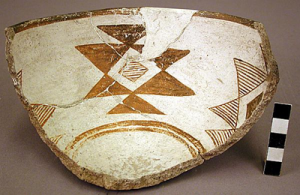
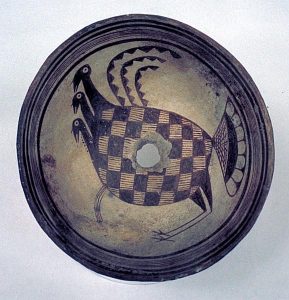
Left image: #10050, Style III Bowl from Swartz site (2012), Right image: #140, Style III Bowl from Deming area (2012)
At Digital Antiquity, additional grants work continued on projects begun in 2016. Work on the dataARC project with colleagues at the National Snow and Ice Data Center, Colleen Strawhacker (dataARC PI), the North Atlantic Biocultural Organization, the Center for Advanced Spatial Technology, plus researchers in Iceland, Scotland, Sweden, and other parts of northern Europe and the North Atlantic. dataARC is producing online tools and infrastructure to enable researchers from a broad range of disciplines to study the long-term human ecodynamics of the North Atlantic, including Iceland, Greenland, and the Orkney Islands. Digital Antiquity Director of Technology, Adam Brin serves as the technical lead for DataARC.
Further work also is underway on the SKOPE II (Synthesizing Knowledge of Past Environments) project. Kintigh, Kohler, and Brin are involved in the project, which provides an online resource for paleoenvironmental data and models. It enables scholars to easily discover, explore, visualize, and synthesize knowledge of environments in the recent or remote past. Through a 2016 collaborative award to Arizona State University (ASU), the University of Illinois at Urbana -Champaign (UIUC), and Washington State University (WSU), the National Science Foundation is funding the ongoing development of SKOPE (SKOPE NSF proposal page).
